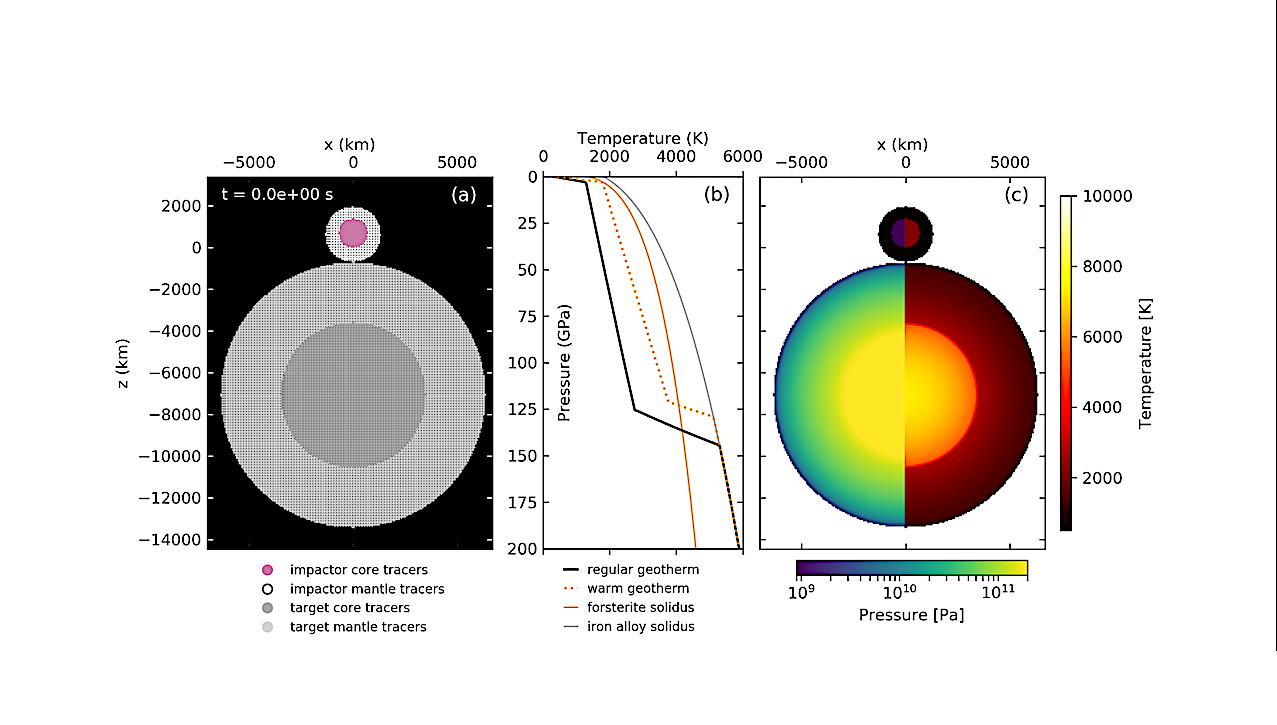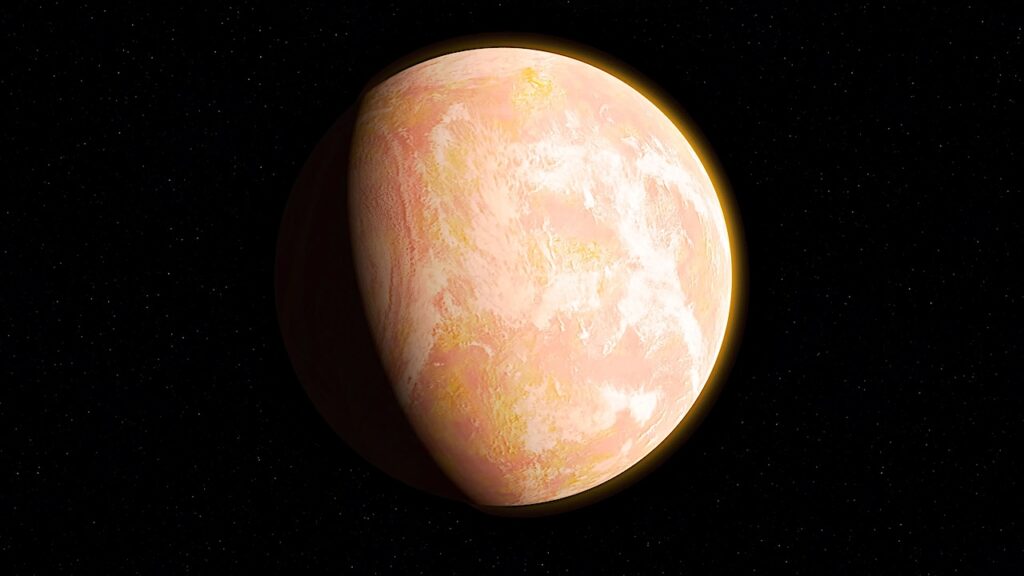The Distribution Of Impactor Core Material During Large Impacts On Earth-like Planets

Large impacts onto young rocky planets may transform their compositions, creating highly reducing conditions at their surfaces and reintroducing highly siderophile metals to their mantles. Key to these processes is the availability of an impactor’s chemically reduced core material (metallic iron).
It is, therefore, important to constrain how much of an impactor’s core remains accessible to a planet’s mantle/surface, how much is sequestered to its core, and how much escapes. Here, we present 3D simulations of such impact scenarios using the shock physics code iSALE to determine the fate of impactor iron. iSALE’s inclusion of material strength is vital in capturing the behavior of both solid and fluid components of the planet and thus characterizing iron sequestration to the core.
We find that the mass fractions of impactor core material that accretes to the planet core (fcore) or escapes (fesc) can be readily parameterized as a function of a modified specific impact energy, with fcore>fesc for a wide set of impacts.
These results differ from previous works that do not incorporate material strength. Our work shows that large impacts can place substantial reducing impactor core material in the mantles of young rocky planets. Impact-generated reducing atmospheres may thus be common for such worlds. However, through escape and sequestration to a planet’s core, large fractions of an impactor’s core can be geochemically hidden from a planet’s mantle. Consequently, geochemical estimates of late bombardments of planets based on mantle siderophile element abundances may be underestimates.
Jonathan P. Itcovitz, Auriol S. P. Rae, Thomas M. Davison, Gareth S. Collins, Oliver Shorttle
Comments: Submitted July 25, 2023; Revised October 26, 2023; PSJ
Subjects: Earth and Planetary Astrophysics (astro-ph.EP)
Cite as: arXiv:2312.12132 [astro-ph.EP] (or arXiv:2312.12132v1 [astro-ph.EP] for this version)
Submission history
From: Jonathan Itcovitz
[v1] Tue, 19 Dec 2023 13:08:24 UTC (3,490 KB)
https://arxiv.org/abs/2312.12132
Astrobiology,








